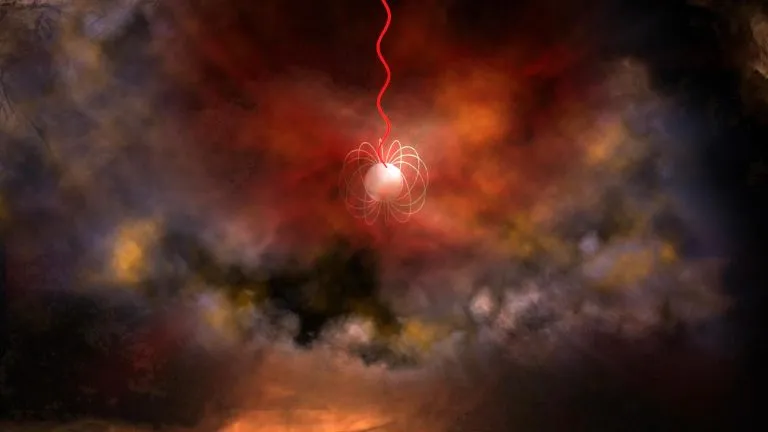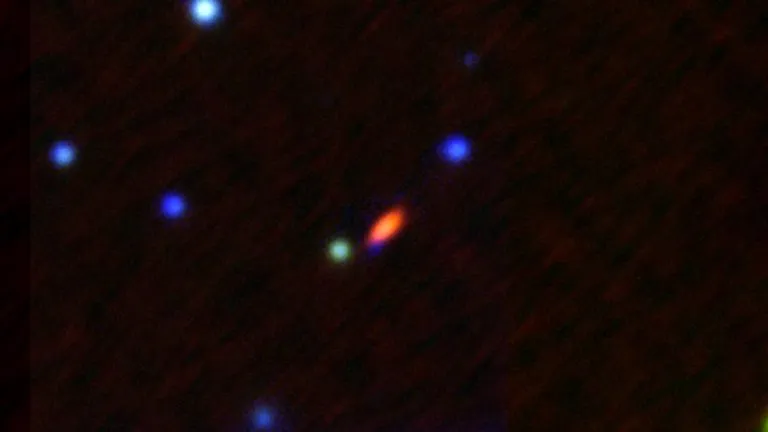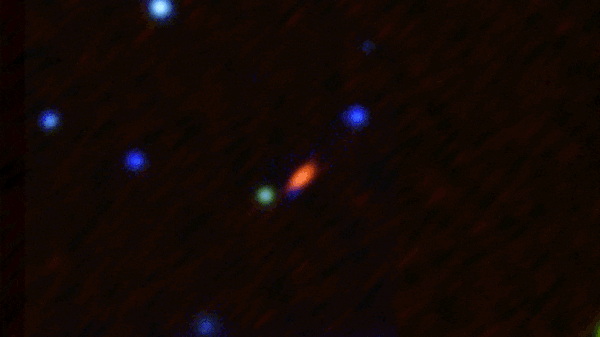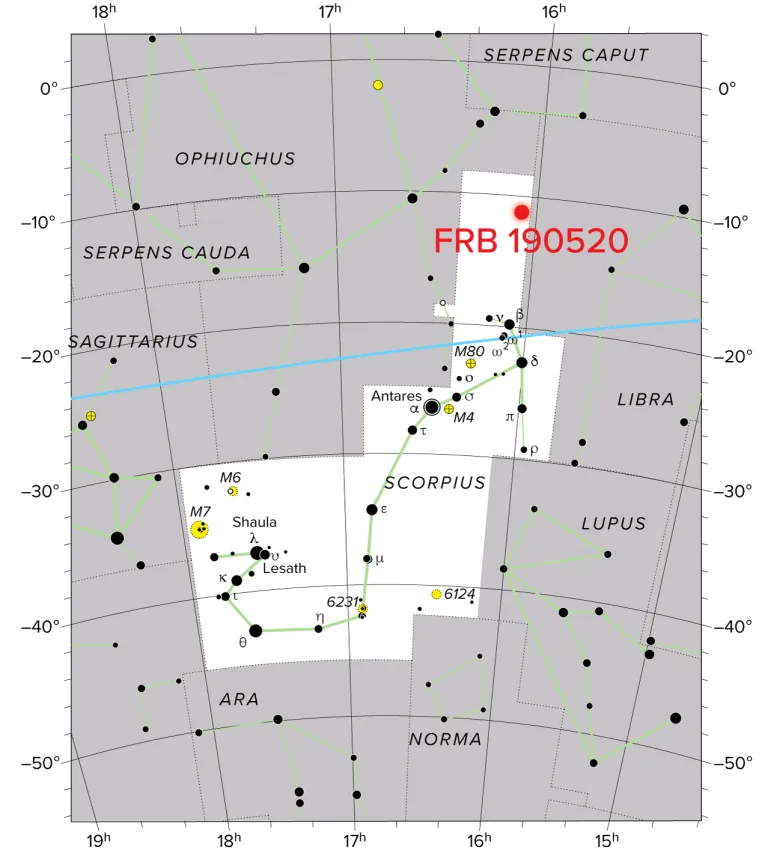In radio astronomy, fast radio burst (FRB) is a kind of short radio pulse, whose length ranges from a fraction of a second to a few milliseconds. It is caused by some mysterious high-energy astrophysical processes that have not yet been discovered. Astronomers estimate that, on average, the energy released by the FRB in one millisecond is equivalent to the energy released by the sun in three days. Duncan Lorimer and his student David narkevic discovered the first FRB in 2007, which is often called Lorimer burst. Since then, many other FRBS have been detected* One of the fast radio bursts, called FRB 180916, is extremely mysterious * because it pulses regularly every 16.35 days.

Now, astronomers have found the only second example of a highly active, repetitive, fast radio burst, with a weak but continuous compact radio source between the bursts. This discovery raises new questions about the properties of these mysterious objects and their usefulness as tools for studying the properties of intergalactic space. Scientists used the Carl g. youngsky very large array (VLA) of the National Science Foundation and other telescopes to study this object, which was first discovered in 2019.
This object, called FRB 190520, was discovered by China's 500m aperture spherical radio telescope (fast). An explosion of the celestial body occurred on May 20, 2019, and was found in the data of the telescope in November of the same year. Follow up observations with fast show that, unlike many other FRBS, its radio waves are frequent and repeated bursts.

The position of the object was determined by VLA observations in 2020, which made visible light observations with the Subaru Telescope in Hawaii show that it is located at the periphery of a dwarf galaxy nearly 3billion light-years away from the earth. VLA observation also found that the celestial body continuously emits weak radio waves between bursts.
Casey law of Caltech said: "These features make this look very much like the first FRB, whose location was determined in 2016 -- also determined by the VLA. This development is a major breakthrough, providing the first information about the environment and distance of the FRB. However, its repeated bursts and the combination of continuous radio emissions between bursts come from a compact area, so that the celestial body discovered in 2016 is called FRB 121102, which is different from all other known FRBS Same, until now. "

"Now we have two of these, which raises some important questions," law said. Law, a member of an international team of astronomers, reported their findings in the journal Nature.
FRB 190520 and FRB 121102, along with all other differences, reinforce the possibility raised earlier that there may be two different FRBS.
"Are those that repeat different from those that do not?" Kshitij Aggarwal, a graduate student at the University of West Virginia (WVU), said, "what about the constant radio emissions -- is this common?"

Astronomers suggest that there may be two different mechanisms to produce FRB, or the objects that produce FRB have different roles in different stages of their evolution. The main candidates for the source of FRB are massive stars as super dense and concentrated child stars left after supernova explosion, or neutron stars with super strong magnetic field, which are called magnetostars.
One of the characteristics of FRB 190520 makes people doubt the usefulness of FRB as a tool to study the matter between FRB and the earth. Astronomers often analyze the impact of intermediate matter on radio waves emitted by distant celestial bodies to understand the fragile material itself. This effect occurs when radio waves pass through a space containing free electrons. In this case, high-frequency waves travel faster than low-frequency waves.
This effect is called dispersion, which can determine the electron density between the celestial body and the earth through measurement; Alternatively, if the electron density is known or assumed, an approximate estimate of the distance of the celestial body can be provided. This effect is often used to estimate the distance of pulsars.
This has no effect on FRB 190520. Based on the Doppler shift of galactic light caused by the expansion of the universe, the independent measurement of distance places the galaxy nearly 3billion light-years away from the earth. However, the signals of the explosion show a certain amount of dispersion, usually indicating a distance of about 8billion to 9.5 billion light-years.
"This means that there is a lot of material near the FRB, which would confuse any attempt to use it to measure intergalactic gas," Aggarwal said He added: "if this is the case elsewhere, then we can't expect to use FRB as the ruler of the universe."
Astronomers speculate that FRB 190520 may be a "newborn", still surrounded by the dense material ejected by the supernova explosion that left behind the neutron star. As these substances eventually dissipate, the dispersion of the burst signal will also decrease. In the "newborn" case, they say, repeated outbreaks may also be characteristic of younger FRBS and decrease with age.
"The FRB field is developing very fast, and new discoveries are made every month. However, huge problems still exist, and this object is providing us with challenging clues about these problems," said Sarah Burke spolaor of West Virginia University.